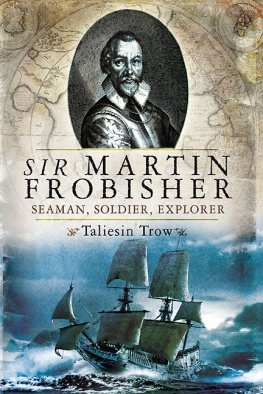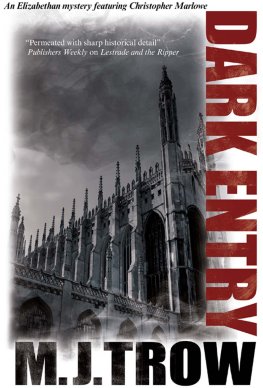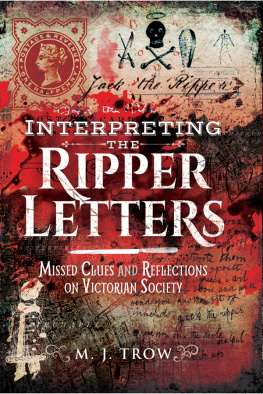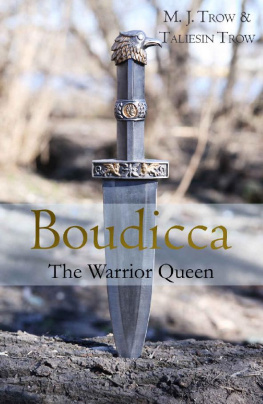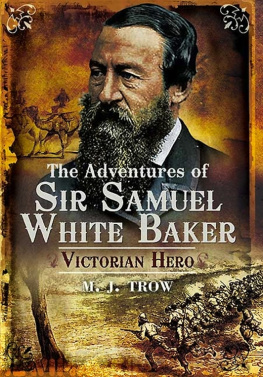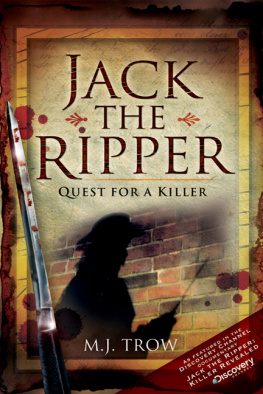

First published in Great Britain in 2010 by
Pen & Sword Military
An imprint of
Pen & Sword Books Ltd
47 Church Street
Barnsley
South Yorkshire
S70 2AS
Copyright Taliesin Trow, 2010
ISBN 978 1 84884 232 8
eISBN 9781844684168
The right of Taliesin Trow to be identified as the author of this work has been asserted by him in accordance with the Copyright, Designs and Patents Act 1988
A CIP catalogue record for this book is available from the British Library
All rights reserved. No part of this book may be reproduced or transmitted in any form or by any means, electronic or mechanical including photocopying, recording or by any information storage and retrieval system, without permission from the Publisher in writing.
Typeset in Ehrhardt by S L Menzies-Earl
Printed and bound in England by MPG Books in the UK
Pe n & Swor d Book s Lt d incorporate s th e imprint s o f
Pen & Sword Aviation, Pen & Sword Maritime,
Pen & Sword Military, Wharncliffe Local History, Pen & Sword Select,
Pen & Sword Military Classics, Leo Cooper, Remember When,
Seaforth Publishing and Frontline Publishing
Fo r a complet e lis t o f Pe n & Swor d title s pleas e contac t
PEN & SWORD BOOKS LIMITED
47 Church Street, Barnsley, South Yorkshire, S70 2AS, England
E-mail: enquiries@pen-and-sword.co.uk
Website: www.pen-and-sword.co.uk

An inaccurate early map of the Arctic.

An imaginative illustration of a kayak based on information derived from Frobishers 1577 voyage to the Arctic.

A sixteenth-century astrolabe, one of the oldest navigational instruments available. This is a German variant, but because it was originally an Arab invention, it still retains Arabic designs on its brass face.

The cross staff in use by a sixteenth-century navigator, from a contemporary engraving.

A sundial and compass dating from the late sixteenth century. This one is probably unique because it also doubled as a powder flask for a firearm.

Highly polished ivory seal-head-shaped nozzle for a sealskin float, similar to the one offered to Frobisher on his second voyage. (From the Bering Strait region, drawing by author from an example collected by Pitt Rivers, 1884)

A sixteenth-century hourglass of the type used on board ship. Even functional timepieces like this were elaborately made by specialist craftsmen.

Ivory hafted flint harpoon head. The Inuit worked in both metal and stone. (Drawing by the author from an example collected by Pitt Rivers, 1884)

A diagrammatic representation of the 741-ton Triumph. As Frobishers flagship in the Armada, it was the largest ship in either fleet and carried forty-six guns.

The Lower Pool looking across to Southwark. In Frobishers day ocean-going ships sailed from the shore on the left of this photograph. (Picture credit: Eloise Campbell)

A sixteenth-century long house of the type built by Wynter on Kodlunarn Island. This is the English variant with the living quarters to the left and animal accommodation to the right. Because there were no trees available and much of the timber had been lost in storms, Wynters carpenters would have had to improvise using stone and driftwood.

The Alchemist by Cornelis Pietersz Begijn, painted in 1663. By the time of this painting, pure chemistry was emerging from the mumbo-jumbo of alchemy. A century earlier, it was a common belief that Frobishers ore contained a high quantity of gold which would have made him and England fabulously rich. Assayers like Jonas Schutz would have worked in chaotic conditions like this.

The generic memorial to Arctic explorers in King Edward VII Memorial Park, Shadwell. Ratcliff was the Quay from which Frobisher set sail for Meta Incognita. ( Picture credit: Eloise Campbell )

Apiece of ore taken from Meta Incognita. The double purpose of Frobishers voyages was to explore and to bring back valuables. The ore proved to be iron pyrites Fools Gold.

A variant of the pistol carried by Frobisher in the painting by Cornelius Ketel. This particular version is an over and under double wheel-lock.
Timeline of Frobisher and New World Exploration
| 1492 | Columbus (Cristoforo Colon) lands on Guanahani Island in the Bahamas, renamed San Salvador Columbus discovers that there is variation of the earths magnetism when his compass deviates from True North |
| 1493 | Spanish Settlement of Hispaniola Treaty of Tordesillas divides New World between Portugal and Spain Columbus goes on to explore Puerto Rico, Cuba and Jamaica |
| 1497 | John Cabot on board the Matthe w reaches Newfoundland |
| 1498 | Columbus discovers South American coast Columbus sights the island of Trinidad and returns to Hispaniola to find the colony there wrecked by rebellion |
| 1502 | Portuguese navigators reach Brazil |

